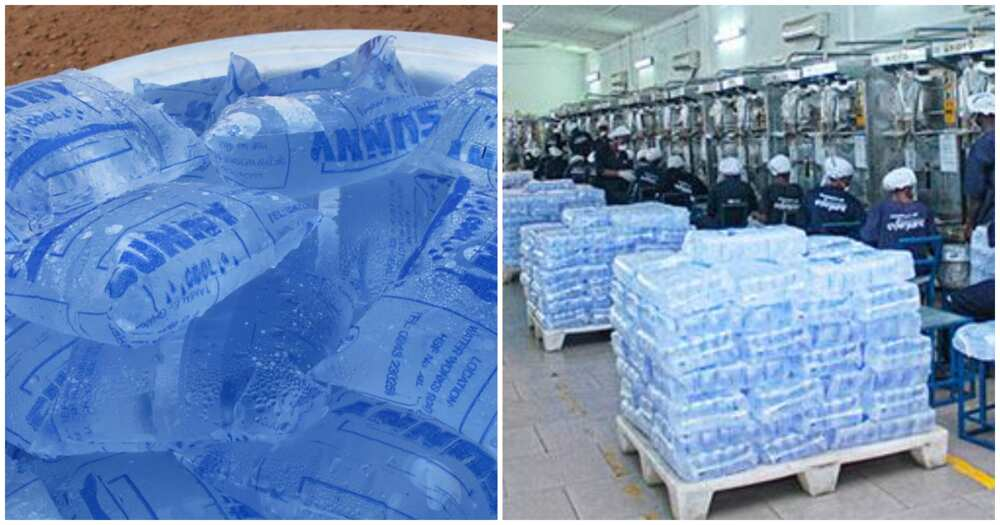In many African countries, especially Ghana and Nigeria, sachet water commonly referred to as “pure water” is the most accessible source of clean drinking water for millions. Once a staple sold for as low as 5 pesewas or 5 naira per sachet, the price of sachet water has steadily and repeatedly increased in recent years, sparking concern among consumers and businesses alike.
But what is really driving the continuous rise in sachet water prices? The answer lies in a complex combination of economic pressures, operational challenges, and policy factors. This article explores the reasons behind the trend, its broader implications, and what it means for everyday people.
1. Raw Material Cost Hikes
The primary components used in sachet water packaging namely polyethylene rolls (used to make the plastic sachets) are imported. These materials are priced in U.S. dollars, making local producers highly vulnerable to exchange rate fluctuations.
• Exchange Rate Volatility: In Ghana, for example, the Ghana cedi has seen regular depreciation against the U.S. dollar. As a result, importing raw materials becomes significantly more expensive.
• Global Oil Prices: Since polyethylene is a petroleum product, fluctuations in global oil prices directly impact the cost of plastic rolls. When oil prices go up, so does the price of sachet packaging.
2. Increased Fuel and Electricity Costs
Production and distribution of sachet water rely heavily on fuel and electricity. Clean water must be filtered, treated, and packaged in hygienic environments that use power-intensive machinery.
• Electricity Tariff Adjustments: In countries like Ghana, recent upward reviews of electricity tariffs by the Public Utilities Regulatory Commission (PURC) have directly impacted the cost of running sachet water businesses.
• Transport Costs: Rising prices of petrol and diesel significantly affect the cost of transporting both raw materials to factories and finished sachets to vendors and retailers.
3. Water Supply Challenges
Access to quality water suitable for purification is becoming more difficult in some urban and peri-urban areas. Irregular water supply from national water companies forces many producers to rely on alternative sources.
• Private Water Tankers: Many sachet water companies now buy water from private tanker suppliers at premium rates because of unreliable municipal supply.
• Borehole Maintenance Costs: For producers with boreholes, the cost of maintaining and powering pumping systems (which run on electricity or generators) has risen sharply.
4. Regulatory and Compliance Costs
Governments are increasingly regulating the sachet water industry to ensure public health and safety.
• Licensing and Certification: Producers are required to pay for certifications from food and drug authorities and environmental agencies. These licenses often come with hefty annual fees.
• Environmental Levies: Some governments are considering or implementing levies on plastic products to curb pollution, which directly affects the pricing of plastic packaging materials.
5. Labour and Operational Expenses
Labour costs have also risen as inflation bites into the economy. Water companies need workers for production, packaging, quality control, and distribution.
• Wages and Social Contributions: Compliance with minimum wage laws and social security obligations adds to production costs.
• Security and Hygiene: As customers demand higher hygiene standards, companies are forced to invest more in clean facilities and staff training expenses that eventually reflect in the final price.
6. Inflation and General Cost of Living
In many African economies, inflation is a persistent issue. When inflation spikes, the cost of all goods and services including water production inputs—rises.
• Packaging Materials: Beyond just the plastic film, items such as sealing machines, storage containers, and labeling materials have all become more expensive.
• Interest Rates and Loans: Producers who rely on bank loans to finance their operations are now facing higher interest rates, which makes it more expensive to borrow and sustain production.
7. Market Dynamics and Profit Margins
Producers and distributors are often squeezed between rising costs and a price-sensitive customer base. Many sachet water businesses operate on thin margins and cannot afford to absorb cost increases indefinitely.
• Competition and Survival: While the market is competitive, companies are increasingly forced to adjust prices to survive. Some small producers have shut down, reducing supply and allowing others to increase prices further.
• Bulk Buyers and Middlemen: Retailers and hawkers often buy in bulk and resell at a markup. With increasing transport and storage costs, these middlemen also adjust their selling prices, sometimes beyond what manufacturers recommend.
8. Environmental Pushback Against Plastic Waste
There is growing environmental concern about the proliferation of plastic waste, especially from sachet water. Though necessary, proposed bans or restrictions on plastic use could further complicate production costs if producers are forced to switch to more expensive biodegradable alternatives.
Conclusion: What Can Be Done?
The consistent rise in sachet water prices is not just a reflection of opportunistic pricing but rather the result of layered economic pressures and structural inefficiencies. While consumers continue to bear the brunt, several steps can help stabilize the industry:
• Government Subsidies: Support for small-scale producers through tax breaks, subsidies for power or water supply, and access to affordable loans could reduce production costs.
• Local Raw Material Development: Encouraging local manufacturing of plastic rolls and packaging materials could help shield the industry from forex shocks.
• Water Infrastructure Investment: Ensuring consistent and affordable access to clean water through public infrastructure would reduce reliance on expensive private alternatives.
• Plastic Recycling Programs: Introducing incentives for recycling sachet waste could reduce environmental levies and plastic production costs.
For now, as economies continue to recover from global disruptions and internal fiscal pressures, the price of sachet water may not drop anytime soon. However, with strategic intervention and collaboration between government, industry players, and the public, there is a pathway to affordability, sustainability, and access.











